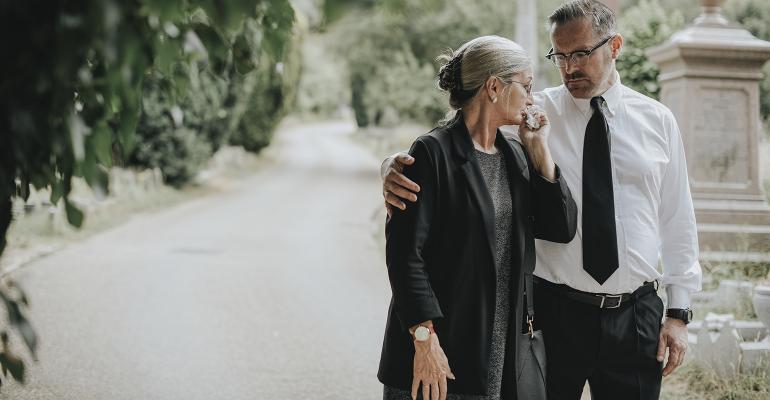When a client’s loved one dies, those who care about the survivors want to help. The instinctive rush to comfort is as swift as it is genuine—“I want to alleviate your pain. I want to do something, anything, to make this difficult time just a little easier.”
As the financial advisor, you may not be as close to your clients as their family members, but you still have ample opportunity to support them emotionally and show that your interest goes beyond asset management to include uncommon support during life’s difficult times.
- “I’ll ensure that your home is safe during the services by having a responsible person remain parked in front of your house the entire time … and I’ll see you at the services on Friday.”
Evidence suggests that thieves scan obituary announcements to learn the date and time of funeral services so they can burglarize the home when they know it’s empty. Offer to have someone you know house-sit during the services. Because a client may not want anyone inside their home, you can have someone park in the driveway or on the street.
Because there is a good chance that an occupied car sitting at your client’s home for a couple of hours will raise suspicions with the neighbors, alert the local police department of your plan by calling the non-emergency phone number. The front desk officer writes up a notice for the day’s roll-call to alert on-duty officers that someone is house-sitting in the driveway.
If the family is uncomfortable having someone other than you in the driveway, you may volunteer to do it yourself. Although this conflicts with your priority of personally attending the services, being at their home when the family returns creates an excellent opportunity to speak with them directly in a less busy environment.
- “I ensure that I will stay on top of all the financial things related to Jim’s death, especially those that need to happen within a certain time frame. We’ll work together to get them done, and I promise to stay in touch regularly.”
Deep grief compromises the executive function of the brain—the part that processes input rationally, methodically and deliberately. At the same time, a grieving person knows that the death of a loved one has financial implications and associated tasks with deadlines. Assure clients that you are alert to all of the financial consequences resulting from the death, and that you also care about their lives. Knowing you will handle things and check in regularly takes a burden from their shoulders and gives them a little more energy to devote to the tasks of grieving.
- “I’ll ensure that you have a nourishing meal after the casserole caravan of the first few weeks has packed up and left town. I’ll call you in six weeks to arrange a date when I can deliver a fabulous meal to your door.”
As humans, the most fundamental way we care for each other is to feed each other. It’s no different when death happens. When my father-in-law died in rural Iowa, and the Field of Dreams casserole caravan rolled in, we had to rent a jumbo refrigerator to hold the generous offerings of food. Sadly, it was so much food that even the 10 adult children and two dozen grandchildren could not finish it during the few days we were in town for the services. Rather than have your generosity get lost in the well-meaning abundance of those first weeks, feed your client when no one else is.
- I’ll ensure that somebody smiles today because Jim lived. I know he loved coffee, so today and also on the one-month anniversary, I will pay for the order of the car behind me at the drive-through coffee shop.”
A common hope of grieving people is that other people also remember their loved ones. One of my favorite ways to do so is by this simple gesture. At a minimum, the universal reaction of the grieving person, the benefactor (you), and the person who got her latte free that day is a smile and an uplifted spirit.
How shall you deliver each of these messages? You must deliver the first one quickly, so a phone call works best unless you have an easy opportunity to see your client in-person. Deliver the remaining three in person, if possible, and as a series of notecards on quality card stock sent via postal mail, to arrive at their home every couple of days in the order listed. In this time of pounds of junk mail each week, there is something especially pleasing and noticeable about the feel of good cardstock.
Keep these four simple and uncommon suggestions at hand so that you can rise above the crowd as an advisor of wisdom and compassion.





